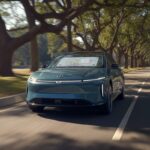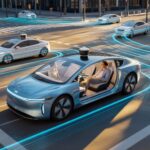
Electric vehicles (EVs) represent a significant shift from traditional internal combustion engine (ICE) vehicles, offering a cleaner, more efficient mode of transportation.
Understanding the fundamentals of electric vehicle technology is essential to grasp how these innovative vehicles are designed, how they operate, and the benefits they offer.
Here’s an overview of the basic principles, the various types of EVs, and their key components.
Basic Principles of Electric Vehicle Technology
Electric vehicles operate on electricity, either stored in a battery or generated on-the-go, as opposed to gasoline or diesel fuel.
The fundamental principle behind EV technology is the conversion of electrical energy into mechanical energy.
This conversion is achieved through the use of electric motors.
Unlike ICE vehicles, which rely on combustion to power the vehicle, EVs use the stored electrical energy to rotate the motor, which in turn drives the vehicle’s wheels.
Types of Electric Vehicles
Electric vehicles can be broadly categorized into four main types, each with distinct characteristics and operation mechanisms:
Battery Electric Vehicles (BEVs):
BEVs are fully electric vehicles powered by rechargeable battery packs. They rely solely on electricity as their source of energy, making them zero-emission vehicles.
Examples include the Tesla Model S, Nissan Leaf, and Chevrolet Bolt EV.
Hybrid Electric Vehicles (HEVs):
HEVs combine an ICE with an electric propulsion system.
These vehicles cannot be plugged in to charge their batteries; instead, the battery is charged through regenerative braking and by the internal combustion engine.
The electric motor and ICE work together to optimize efficiency, reducing fuel consumption and emissions. The Toyota Prius is a well-known example of an HEV.
Plug-in Hybrid Electric Vehicles (PHEVs):
PHEVs are a variation of HEVs that can be plugged into an external power source to recharge their battery, in addition to regenerative braking and the ICE.
This allows them to operate on electric power alone until the battery is depleted, at which point the vehicle automatically switches to hybrid mode.
Examples include the Chevrolet Volt and the BMW i3 with range extender.
Fuel Cell Electric Vehicles (FCEVs):
FCEVs are powered by hydrogen fuel cells, which generate electricity through a chemical reaction between hydrogen and oxygen, with water vapor as the only emission.
FCEVs are refueled with hydrogen gas at specialized fueling stations. The Toyota Mirai and Hyundai Nexo are examples of FCEVs.
Components of Electric Vehicles
The operation of EVs revolves around several key components:
Electric Motor:
The heart of an EV, the electric motor converts electrical energy into mechanical energy to drive the vehicle’s wheels.
Different types of motors, such as induction motors and permanent magnet motors, are used based on efficiency, cost, and performance requirements.
Battery Pack:
The battery pack stores electrical energy that powers the electric motor.
Lithium-ion batteries are the most common type due to their high energy density, long life, and low maintenance needs.
The capacity of the battery pack significantly influences the vehicle’s range.
Controller:
The controller regulates the flow of electrical energy from the battery to the motor, controlling the speed and torque of the vehicle.
It acts as the intermediary between the driver’s inputs (via the accelerator pedal) and the motor’s power output.
Inverter:
The inverter converts direct current (DC) from the battery into alternating current (AC) to drive the electric motor.
It also plays a crucial role in regenerative braking, allowing the motor to act as a generator and recharge the battery during braking.
Understanding these fundamentals provides a solid foundation for comprehending the technological advancements and benefits of electric vehicles.
As EV technology continues to evolve, these principles remain at the core of innovations aimed at improving efficiency, performance, and sustainability in transportation.


